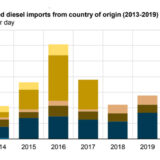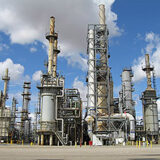Ethanol gathering discusses need for higher octane fuels, more stable regulatory environment
Jan Koninckx, global business director for advanced biofuels, DuPont Industrial Biosciences, said that the instability surrounding the U.S. Renewable Fuel Standard (RFS) and the Environmental Protection Agency’s (EPA) final rule has caused the company to seek more business outside the U.S., where regulation is relatively more stable.
“It’s imperative that the regulation is stable and interpretable, and this is not the case right now,” Koninckx said during a panel discussion at the 21st Annual National Ethanol Conference in New Orleans, La., U.S.A., which was held from Feb. 15-17.
Koninckx said he is optimistic about future opportunities for ethanol in China, as the number of Chinese vehicles continues to grow rapidly.
Meanwhile, the policy debate in Europe continues and the general sentiment towards renewable fuels is less favorable than a few years ago. However, as sentiment towards diesel following the VW scandal is turning less favorable, he believes that there could be more interest in ethanol blending in Europe in the future.
The high octane characteristics of ethanol are key to helping the U.S. vehicle fleet reach its 2025 efficiency target of 54.5 miles per gallon, according to a panel discussion at the conference.
Tom Leone, who is with the Powertrain Research & Advanced Engineering at Ford Motor Company said octane is a key limitation to the EPA’s fuel economy requirements, which are extremely challenging.
Higher ethanol blends are in the current stage of research and development for Ford and a number of other car manufacturers, he said.
Leone said that gasoline with a 98-research octane number (RON) was a good target to aim for. In most areas of the U.S., between 87 and 94 RON gasoline is commonly sold at gasoline stations.
The key to the success of a high-octane fuel, which is required by turbocharged and downsized engines due to their higher compression ratio, is getting the customer on board. Naturally, higher octane fuels cost more. The challenge is in striking a balance between price and quality, the panel said.
The panel noted that if U.S. consumers chose to buy E25 just half the time, this would create a demand for millions more barrels of ethanol.











